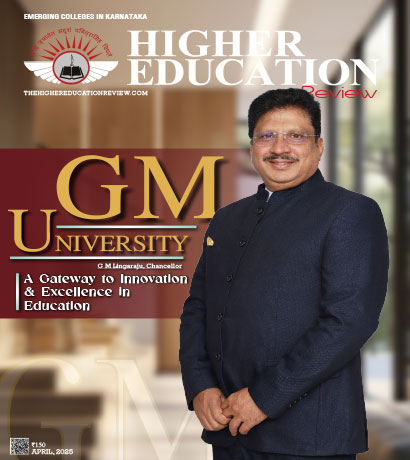Online Education: A Way Forward Into The Future Or Not?

Dr. Sunita Gandhi, Founder, Global Education & Training Institute and Global Classroom
One of the many aspects of COVID-19 is its impact on India's education system and industry in general. From unprepared teachers to online education to a new education policy, it was all too much to soak in. However, many critics believe it to be a paradigm shift that the system was longing for? Or is it too early to say so?
The lockdown has fastened the reception of technology in every sphere. E-learning, as the name suggests, depends on the accessibility and open-ness of technology, yet practically no accessibility of such nature is a huge task to work on before turning to the online industry. In an ongoing 2017-18 study, the Ministry of Rural Development found that about 47 percent of Indian family units get about 12 hours of electricity and over 36 percent of schools in India work without power. This implies while students from affluent families can explore the opportunities of online learning, those from oppressed backgrounds are probably going to capitulate to shortcoming and an absence of this transition, either in light of the detachment with the technology or the low-level of training of their parents to direct them through these applications.
Schools and training institutes should initially take a note of their current abilities and assets to go on-line or give distant learning services. This ought to incorporate an assessment of the accessible advancements and conveyance systems. The assessment ought to be done in two stages: one, to check the school's preparation to react in the present situation when going to schools is not an option; second, for when the schools may re-open. To comprehend external solutions, schools must talk with ed-tech companies and the Ministry of Electronics and Information Technology delegates. Guarantee that the arrangements consider the advanced sharpness of the intended interest group. For instance, if the students are situated in a Tier 2 or 3 city, make sure to consider that they might not have reach to a rapid internet or advanced gadgets.
"Albeit computerized training isn't liberated from obstacles as the traditional Classroom correspondence has a propensity over online instruction"
Albeit computerized training isn't liberated from obstacles as the traditional Classroom correspondence has a propensity over online instruction. E-learning is probably going to observe a high dropout rate because of the absence of environment for concentrating as students would get diverted by the comforts of their homes or web-based media at home and prob-ably won't have feel connected with classmates while taking online classes. There is much to do before technology can be considered as a standard training method since students from urban communities have the ways to choose advanced instruction while those living on the outskirts won't and neither would it be economically feasible for them to invest in assets re-quired for such instruction methods. It will stay a repulsive assignment for India to deliver and to carry online training to the new ordinary because of mammoth rustic population and its vision for the perpetual admittance to the Internet is a long way from reality in Tier 2 and Tier 3 urban cities of India.
There is a basic need for an in-vestment in developing a frame-work for giving the online training in much prosperous manner. Prompt measures are essential to diminish the impacts of the pandemic on bids for employment, entry level position projects, and research projects. There is a need for establishing value confirming components and quality benchmark for internet learning programs that must be created and offered by Higher Education Institutions in India keeping this quick transition in mind.
The lockdown has fastened the reception of technology in every sphere. E-learning, as the name suggests, depends on the accessibility and open-ness of technology, yet practically no accessibility of such nature is a huge task to work on before turning to the online industry. In an ongoing 2017-18 study, the Ministry of Rural Development found that about 47 percent of Indian family units get about 12 hours of electricity and over 36 percent of schools in India work without power. This implies while students from affluent families can explore the opportunities of online learning, those from oppressed backgrounds are probably going to capitulate to shortcoming and an absence of this transition, either in light of the detachment with the technology or the low-level of training of their parents to direct them through these applications.
Schools and training institutes should initially take a note of their current abilities and assets to go on-line or give distant learning services. This ought to incorporate an assessment of the accessible advancements and conveyance systems. The assessment ought to be done in two stages: one, to check the school's preparation to react in the present situation when going to schools is not an option; second, for when the schools may re-open. To comprehend external solutions, schools must talk with ed-tech companies and the Ministry of Electronics and Information Technology delegates. Guarantee that the arrangements consider the advanced sharpness of the intended interest group. For instance, if the students are situated in a Tier 2 or 3 city, make sure to consider that they might not have reach to a rapid internet or advanced gadgets.
"Albeit computerized training isn't liberated from obstacles as the traditional Classroom correspondence has a propensity over online instruction"
Albeit computerized training isn't liberated from obstacles as the traditional Classroom correspondence has a propensity over online instruction. E-learning is probably going to observe a high dropout rate because of the absence of environment for concentrating as students would get diverted by the comforts of their homes or web-based media at home and prob-ably won't have feel connected with classmates while taking online classes. There is much to do before technology can be considered as a standard training method since students from urban communities have the ways to choose advanced instruction while those living on the outskirts won't and neither would it be economically feasible for them to invest in assets re-quired for such instruction methods. It will stay a repulsive assignment for India to deliver and to carry online training to the new ordinary because of mammoth rustic population and its vision for the perpetual admittance to the Internet is a long way from reality in Tier 2 and Tier 3 urban cities of India.
There is a basic need for an in-vestment in developing a frame-work for giving the online training in much prosperous manner. Prompt measures are essential to diminish the impacts of the pandemic on bids for employment, entry level position projects, and research projects. There is a need for establishing value confirming components and quality benchmark for internet learning programs that must be created and offered by Higher Education Institutions in India keeping this quick transition in mind.

